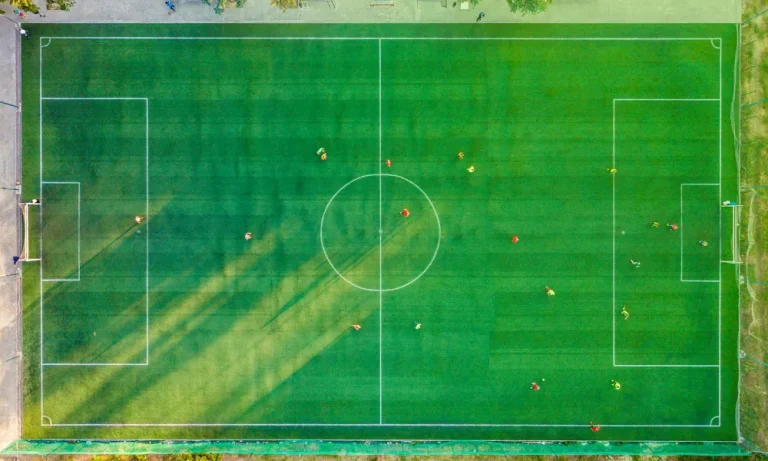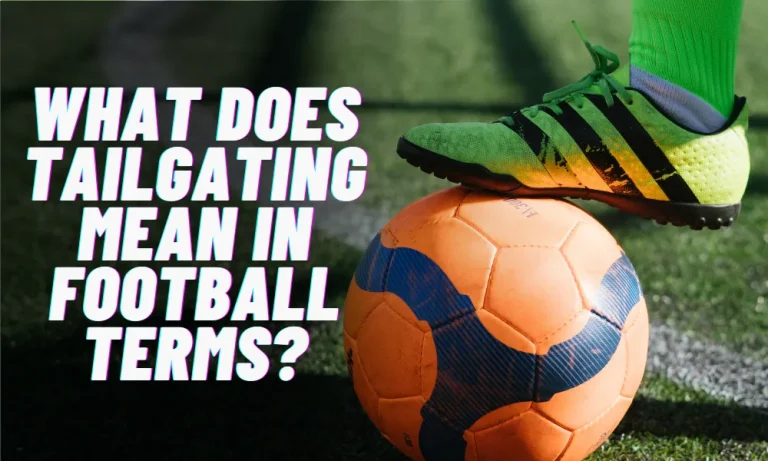What Happens on a First down in American Football?
Introduction
Imagine watching a game of American football and hearing the announcer exclaim, “First down!” Have you ever wondered what that means? Understanding what happens on a first down is crucial for any football fan. It’s like unlocking a door to a whole new level of excitement and strategy. In this article, we will delve into the world of American football and explore the concept of a first down. From its definition to its implications on the game, we will break it down in a way that anyone can understand. So, let’s get started and discover what really happens on a first down in American football.
What is a First Down?
A first down is a fundamental concept in American football that marks the beginning of a new set of offensive plays. It signifies a team’s progress towards gaining the necessary yardage for a first down. To achieve a first down, the offense must move the ball forward by at least 10 yards within four downs or attempts.
During a game, a first down is achieved when the offensive team successfully advances the ball past the line to gain, which is the yardage needed for a first down. For example, if the offense starts a series of plays at their own 20-yard line, they must reach the 30-yard line to achieve a first down. This progression is measured by the distance between the line of scrimmage (where the play starts) and the first-down marker.
The role of the offense is to gain a first down by strategically selecting plays that allow them to move the ball forward. They have four downs to achieve this objective. The offense can achieve a first down by either running the ball (carrying it forward) or passing it to a teammate. The specific play selection depends on various factors, such as the field position, the score, and the defensive formation.
On the other hand, the defense aims to prevent the offense from gaining a first down. They employ various tactics to stop the offense’s progress, such as tackling the ball carrier, intercepting a pass, or forcing an incomplete pass. If the defense successfully prevents the offense from gaining the necessary yardage within four downs, they regain possession of the ball.
Yardage and Chains
Understanding the yardage needed for a first down is crucial to comprehend the progression of the game. In American football, the offense must advance the ball at least 10 yards within four downs to achieve a first down. This yardage requirement ensures that the offense keeps moving forward and maintains possession of the ball.
To measure the progress towards a first down, the game utilizes a visual representation called the “chains.” These chains consist of two poles connected by a 10-yard-long chain. They are positioned on the sideline, opposite the teams’ benches. The chains provide a clear visual indication of the distance the offense needs to gain for a first down.
The chains are used during the game to measure the offense’s progress. When a team begins a new set of downs, the chains are placed at the starting position, which is typically the location where the previous play ended. As the offense gains yardage, the chains are moved accordingly, always measuring the distance needed for a first down. The officials refer to the chains to determine whether the offense has achieved a first down or not.
Offensive Play Options
When the offense starts a new set of downs on a first down, they have several play options at their disposal. The choice of play depends on various factors, including the team’s offensive strategy, the field position, and the defensive formation. Let’s take a closer look at some common play strategies employed by the offense.
One common play strategy on a first down is the running play. This involves handing off the ball to a running back who attempts to carry it forward and gain yardage. Running plays are effective for gaining a few yards and setting up more manageable situations for subsequent downs.
Another play option is the passing play. In this strategy, the quarterback throws the ball to a receiver downfield. Passing plays are often used to gain significant yardage quickly or to catch the defense off guard. They require precise timing and coordination between the quarterback and the receivers.
The specific play call can vary greatly depending on the offensive team’s playbook and the situation. For example, some common play calls on a first down include “slant route,” “draw play,” or “play-action pass.” Each play call is designed to exploit the defense’s weaknesses and gain the necessary yardage for a first down.
Defensive Strategies
When the defense faces a first down, they employ various strategies to stop the offense from gaining the required yardage. Understanding these defensive tactics can help you appreciate the complexity and intensity of American football. Let’s take a closer look at some common defensive strategies used on a first down.
One key defensive tactic is to stop the running game. This involves the defense focusing on stopping the running back from advancing the ball. Linebackers and defensive linemen aim to penetrate the offensive line and tackle the runner behind the line of scrimmage. By shutting down the running game, the defense can force the offense into more challenging passing plays.
Another defensive strategy is to apply pressure on the quarterback during passing plays. This can be achieved through various means, such as blitzing. When the defense blitzes, additional players rush towards the quarterback, aiming to disrupt the passing play and sack the quarterback. By pressuring the quarterback, the defense aims to force incomplete passes or even turnovers.
Defensive formations and plays are designed to counter specific offensive strategies. For example, a common defensive formation is the 4-3 defense, which consists of four defensive linemen and three linebackers. This formation provides a balance of run-stopping and pass-rushing capabilities. Defensive plays can vary, with examples including “cover 2,” “man-to-man coverage,” or “zone blitz.” Each play is designed to confuse the offense and disrupt their execution.
Consequences of a Successful First Down
When the offense successfully gains the required yardage on a first down, it brings several benefits that can significantly impact the game. Let’s explore the consequences of a successful first down for the offense.
One major benefit of a first down is that it extends the team’s possession of the ball. By gaining enough yardage, the offense earns a new set of downs, giving them more opportunities to continue their drive and potentially score points. This not only keeps the offense on the field but also limits the amount of time the opposing team’s offense has to score.
A successful first down also generates momentum for the offense. It boosts the confidence of the players and energizes the entire team. This momentum can have a psychological impact on both teams, as the offense gains confidence and the defense may become demoralized. This positive energy can fuel the offense’s performance and lead to even greater success on subsequent plays.
The consequences of a successful first down extend beyond the immediate possession. It can influence the overall flow and outcome of the game. By maintaining possession and building momentum, the offense can control the tempo of the game and wear down the opposing defense. This can lead to longer drives, higher time of possession, and ultimately, more scoring opportunities.
Consequences of a Failed First Down
When the offense fails to gain the required yardage on a first down, it brings about several consequences that can significantly impact the game. Let’s explore the consequences of a failed first down for the offense.
One immediate consequence of a failed first down is the possibility of turnover on downs. If the offense fails to move the ball the required distance within the allotted four downs, possession of the ball is handed over to the opposing team. This can be a critical turning point in the game, as it not only deprives the offense of further opportunities but also grants the opposing team a chance to take control of the game.
A failed first down can also impact field position. If the offense fails to advance the ball, they may find themselves in a less favorable position on the field. This can make subsequent plays more challenging, as the offense has less room to work with. It also gives the opposing team a shorter distance to travel in order to score, putting additional pressure on the defense.
Additionally, a failed first down can have an impact on game momentum. Failing to convert a first down can be frustrating for the offense and can lead to a loss of confidence and momentum. Conversely, the defense may gain confidence and momentum, which can make it more challenging for the offense to execute plays successfully. This shift in momentum can have a ripple effect on the overall flow and outcome of the game.
First Down Statistics
Analyzing first down statistics in American football provides valuable insights into the game and its dynamics. Let’s delve into the importance of success on first downs for overall game performance and explore examples of teams with high first down conversion rates.
First down statistics are crucial because they reflect a team’s ability to sustain drives and maintain possession of the ball. A high conversion rate on first downs indicates that the offense is consistently moving the ball and gaining the necessary yardage. This not only keeps the offense on the field but also limits the opportunities for the opposing team’s offense to score.
The success rate on first downs has a direct correlation with a team’s overall offensive performance. By converting a high percentage of first downs, teams can extend their possessions, control the clock, and wear down the opposing defense. This increases the chances of scoring points and ultimately winning the game.
Several teams have excelled in converting first downs, showcasing the impact it can have on their overall performance. For example, the New England Patriots, under the leadership of their coach Bill Belichick, have consistently ranked among the top teams in first down conversion rates. This has contributed to their sustained success and multiple Super Bowl victories.
Similarly, the Kansas City Chiefs, led by quarterback Patrick Mahomes, have showcased an explosive offense with a high first down conversion rate. This ability to move the chains efficiently has been instrumental in their offensive dominance and their appearance in multiple playoff runs.
Technical FAQs: What happens on a first down in American football
What is a first down in American football?
A first down is the first opportunity an offense gets to advance the ball 10 yards towards their opponent’s end zone within four downs.
How is a first down achieved?
A first down is achieved when the offense successfully gains 10 yards or more within their allotted four downs.
What happens if the offense fails to get a first down?
If the offense fails to gain 10 yards within the four downs, possession of the ball is turned over to the opposing team.
How does a first down impact the number of downs remaining?
A first down resets the number of downs back to four, giving the offense a new set of opportunities to advance the ball.
Can a team achieve multiple first downs on a single possession?
Yes, a team can achieve multiple first downs on a possession by gaining 10 yards or more on consecutive plays, allowing them to sustain their drive.
Conclusion
We’ve explored the intricacies of what happens on a first down in American football. From the definition and yardage requirements to the offensive and defensive strategies, we’ve covered it all. Understanding first downs is not only important for football fans, but it also enhances the overall game-watching experience. So, the next time you hear the announcer shout, “First down!” you’ll know exactly what it means and can appreciate the significance of that moment. Keep exploring the fascinating world of American football, and who knows, you might uncover even more exciting aspects of the game. Enjoy the thrill of every first down, and let the game unfold before your eyes!





